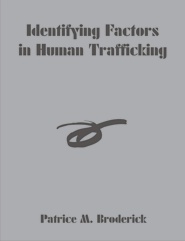LibrarySocial SciencesSociology
Identifying Factors in Human Trafficking
| Institution: | Florida Metropolitan University Online Brandon |
|---|---|
| Advisor(s): | Dr. Hal Campbell |
| Degree: | Master of Science |
| Year: | 2005 |
| Volume: | 61 pages |
| ISBN-10: | 1581122837 |
| ISBN-13: | 9781581122831 |
Abstract
This thesis reviews the transnational problem of human trafficking, a form of slavery. Women and children are trafficked within and between countries at an alarming rate and it has become a prime agenda for the Bush Administration and the Department of State to call for action and solutions to. This thesis opens with a defining of this problem and overview of the scope of the problem on a global scale. It reviews social, political and economic factors which play a role. It describes laws enacted and police responses and describes what research has been conducted to get a grasp of what is involved and what might be done.
This author decided to explore factors that other researchers have suggested are “compelling factors” in victimization. This research hypothesis for this thesis explores the economic factors. Comparisons are made between countries of origin where victims originate from and destination countries where they are trafficked to.
The research findings reveal some significant differences in economic factors exist between the origin and destination countries. The findings lend support in why victims feel compelled to seek entrance to countries like the U.S. and Australia or U.K. and might be easy prey for traffickers. This author makes it clear that the research here does not mean that this is why they are victimized. Further research with victim surveys and victim interviews will be helpful. Furthermore, it will be valuable to conduct more exploration of the economic factors, but more accurate data sources are needed. It is recommended that countries attempt to establish more standardized criteria for reporting economic data.

